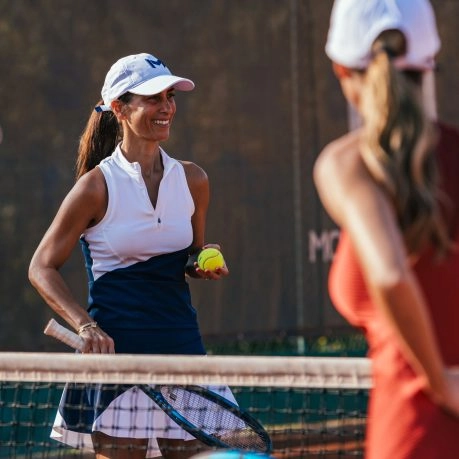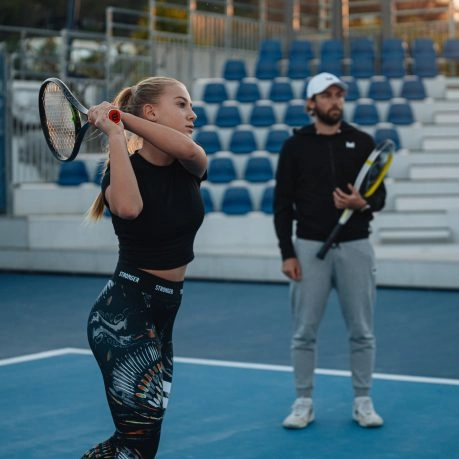
Like the forehand, if we divide the backhand into three parts, we essentially find the preparation, the point of impact and the follow-through. The point of impact is crucial, as it determines the direction and quality of contact between the ball and the racket. However, the follow-through is just as important for ensuring the effectiveness of the shot, and should not be neglected. Improve your two-handed backhand with a tennis course offered by Patrick Mouratoglou‘stennis academy .
The importance of support

The biggest mistake with accompaniment is… not accompanying correctly. Many players interrupt their movement before completing it. This may be due to a fear of losing control of the ball, a lack of understanding of the importance of the follow-through or simply a fear of colliding with the racket. Blocking the movement drastically reduces the acceleration generated, which is essential for a powerful, accurate backhand. What’s more, by stopping the movement, the arm absorbs all the energy, which can lead to long-term injury.

How to accompany a two-handed backhand
Here are a few tips to help you succeed with two-handed backhands:
- Visualise a row of balls to hit, as if you had to hit several balls in a row. This will help you extend your stroke.
- Position yourself facing the net, with the racket at right angles to it, and follow the racket along the net to maximise the range of movement.
- Stretch your arms as far forwardas possible at impact, with the non-dominant arm almost fully extended.
- Never release your grip on the racket : keep both hands on the handle throughout the stroke.
By following this advice, you’ll ensure that your follow-through is complete, minimising interruptions to your swing and maximising the power and consistency of your strokes.

The end of the two-handed backhand movement
When you reach the end of your backhand, the racket should be closed, i.e. the sieve should be pointing towards the ground. Your non-dominant hand should be turned so that the palm is towards the ground and the fist towards the sky. This final gesture helps to maintain the lifted effect on the ball, guaranteeing a stable, controlled trajectory. A follow-through with an open racket risks producing a cut effect or sending the ball well above the desired trajectory.
In short, complete a large, fluid movement without interruption and finish with your hands on your shoulder to ensure a clean, powerful shot.
The key to a successful two-handed backhand: power, control and consistency
The two-handed backhand, although often more powerful and stable, should not be seen as a defensive weapon. When mastered, it becomes a real offensive force that can be used to gain an advantage in the rally, especially against fast balls or those with a lot of spin. The key lies in the consistency of your strokes and your ability to link them together without losing fluidity. The more you practise, the more natural your follow-through will become, resulting in greater precision and confidence in your shots, whether attacking or defending.
In short, a good two-handed backhand combines power, control and consistency, and it’s essential to always seek to optimise your follow-through to get the most out of your shot.
Frequently asked questions
-
To get a good backhand, follow these key points:
- Preparation: Adopt a balanced position with your shoulders turned and the racket well prepared behind you.
- Point of impact: Hit the ball with a stable racket and a point of impact in front of your body.
- Accompaniment: Extend the movement after impact and make sure you finish your stroke with fluidity and precision.
-
The choice between a one-handed or two-handed backhand depends on the player:
- One-handed backhand: More reach, ideal for variations and slices. Requires good technique and timing.
- Two-handed backhand: More stability and power, especially for less experienced players. Offers better control, especially in defence.
-
The two-handed backhand is generally considered to be the most powerful, as it exploits the strength of both arms. It’s easier to generate acceleration and power, which makes it particularly formidable in exchanges at the back of the court.

















